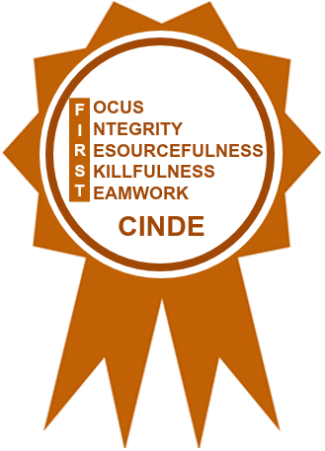Last year when our CEO Kelle O’Neal shared her thoughts on company culture in How We’re Making “Remote Work” Work, she talked about the importance of communication and cited tools and techniques we depend on. As we’ve added new consultants this year and built out our administrative staff, too, we’re focusing even more on being effective with our communications.
Being a remote company can have its communication challenges. We work from home instead of traveling into an office. We’re distributed across the U.S., and some of us occasionally work outside the country. We’re on different time zones (no surprise there). We often see our clients more than our co-workers, which is not the norm for most companies.
Given these challenges/opportunities, we’re working hard to embed communication best practices into our remote work culture — particularly focusing on the areas of experimentation, visibility and creativity.
Experimentation: Try, Then Tweak
In our first remote work culture post, we mentioned the collaboration tool Slack and Zoom for internal video conferences. (We use Zoom for client meetings, too.) While these tools aren’t used by 100% of our team members, more and more of us depend on Slack and Zoom each day.
Here are a few tweaks we’ve made since we first began using Slack and Zoom more than a year ago:
- We added new channels (categories) on Slack to organize our communications. One is water-cooler — a place to share what are typically non-work communications — and another is for the monthly webinar we co-produce with DATAVERSITY. It takes effort to remember that Slack can be just as effective as (or even better than) email, but our early adopter channel fans are showing us the way.
- Slack offers dozens, maybe hundreds, of integrated apps that can benefit a company’s marketers, sales reps, their customer support area, etc. Our Marketing team likes the daily Google Analytics report the Arc integration offers. It’s a quick way to communicate traffic patterns and engagement on our website — right inside Slack.
- With Zoom, we’re finding it beneficial to record company-wide calls. This way, we can share replay links with our team members who are out of the (virtual) office on vacation or onsite with clients. If we were based in an office, we might say, “I’ll catch you up in the break room on what you missed.” But that doesn’t work here.
- Zoom lets you easily toggle back and forth between “video on” and “video off,” with the latter preventing others from seeing you in real-time. Even though we don’t mind seeing our team members’ avatars (the video-off default), for some meetings we encourage everyone to “show us your face” before turning off the video. Seeing our remote teammates on-screen makes us feel more connected.
We also use less trendy communication tools, like email and Dropbox for sharing files. They don’t offer the bells and whistles of Slack and Zoom, but they’re still important tools for us. And, of course, we still pick up the phone to discuss a specific business issue, ask a question or just catch up.

John Ladley makes an appearance on water-cooler, FSFP’s new just-for-fun communication channel on Slack.
Visibility: Be There and Be Transparent
When you’re part of traditional corporate culture, it’s often easy to find out what’s going on by just being in the office. Working from home means you can’t drop by the second-floor break room or share an elevator ride with a senior leader or person from another department. These interactions often lead to sharing information about a project, hearing company news or getting one-to-one time with someone.
Slack, by default, is completely open — meaning a consultant in our client area can click into Marketing’s channels to see what that team is talking about. (You can also configure a channel to be private and send one-to-one private direct messages.) This transparency sends a message that we welcome everyone to be in the know.
Visibility and transparency are important for a remote work company, especially if one of these thoughts are on our mind:
- Who’s available if I have a question, when I can’t do a cubicle drop-by? One way we’re visible is showing our availability on Slack, setting our status to “active” or “away.” While it takes an extra click to do so, it’s a nice way for our team mates to know when we’re available and working.
- How did things go for FSFP over the last quarter? Did we bring on any new clients? In our former lives, many of us worked for companies that only sporadically sent out all-employee emails with updates on how the company was doing. While that might work in a traditional business where information is communicated in other ways, it doesn’t in a virtual company. Sharing key information each quarter, like new clients we started working with, keeps us in the know — no matter our job title or function. (We do quarterly update conference calls, too, which we talked about here.)
- Is Kelle open to hearing my suggestion about a different way to do [fill in the blank]? Kelle and the leadership team regularly ask for our feedback, so they can see what’s working and what can be improved. As an example, we schedule periodic “Friday Forums” where we review client projects, dive deep into one of our service areas or review our consulting methodologies. Even though the forums seem to be working (we get good attendance and good engagement), we recently sent the team a survey asking for their input on how to make these sessions more beneficial.
Creativity: Be Fun and Spontaneous
Injecting fun and sometimes, surprise, into our communications keeps our remote team connected and engaged; here are a few tactics:
- Slack is fun with its at-the-ready emojis and its ability to share photos. But we also look for ways to spice up our Zoom video conference calls. Sometimes it’s wearing a funny hat or t-shirt that elicits comments or it’s when we join the call from outside our home office. (“Say hello to my Uber driver.”)
- Our quarterly update call format gives Kelle the opportunity to bestow a FIRST award on one of our team members — someone who exemplifies FSFP’s core values of focus, integrity, resourcefulness, skillfulness and teamwork. We get to hear the honoree’s name and their accomplishments right when they do, which makes for a nice surprise.
- We also use the quarterly calls to turn the spotlight on a specific FSFP team, job function or client success story. This gives us a chance to learn more about areas and projects we’re not immediately connected to.
- In our new hire announcements, which we send out on that person’s first day, we include a fun fact about our new, remote co-worker and where they’re based. Then, when a new team member is set up in Slack, we’re alerted and that gives us the opportunity to send an emoji and say welcome.

Cinde Wakefield, FSFP’s Recruiting and Human Resource Consultant, was our recent FIRST award recipient — a quarterly award given to team members whose contributions exemplify our vision, mission and values.
We’re Choosing Progress Over Perfection
In April, FSFP celebrated its tenth anniversary. (Kelle wrote about it here.) But we’re still a young company even though our leadership and many of our team members each have more than a decade of experience in information management consulting. We’ve each worked for a variety of companies, large and small and at assorted industries. We can recall when those companies tried, succeeded and sometimes failed in their approach to internal communication. But most of us haven’t worked with a 100% remote team before, so the communication challenges and opportunities we have here feel like new territory.
Collectively, we’re choosing progress over perfection — trying new approaches, acknowledging what’s working from a communication standpoint and jettisoning what isn’t. It’s refreshing to not get too attached to traditional methods that aren’t right for us. It feels empowering to know we can shape our work environment. And it keeps FSFP’s virtual company format one that works not just for us, but for our clients and industry partners, too.
If you’re a remote worker and/or you work with people who work from home (or Starbucks or a shared co-working space), let us know in the comments section some of your tried-and-true communications tips — or those that have failed miserably.

